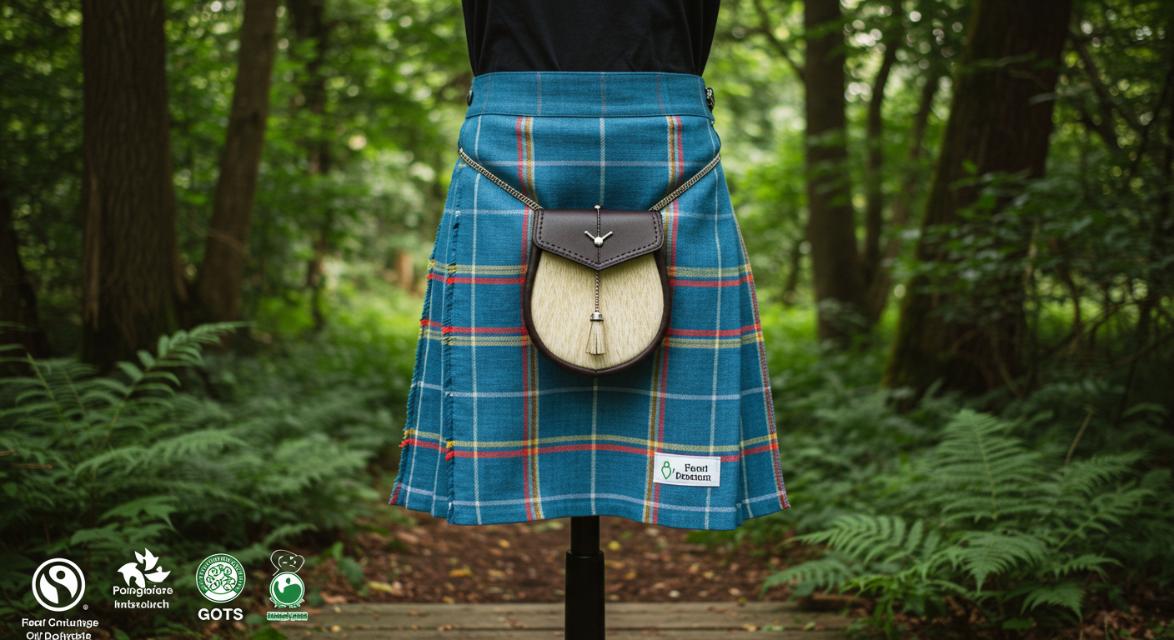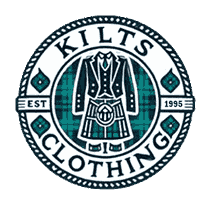Sustainable Fashion: The Environmental Benefits of Investing in a Quality Formal Kilt

In today's world, where the fashion industry is one of the largest polluters, many consumers are shifting toward more sustainable and environmentally conscious choices. One such garment that aligns perfectly with the principles of sustainable fashion is the formal kilt. This traditional Scottish attire, once confined to specific cultural settings, has found its place in modern ceremonies, weddings, and everyday fashion. When made with care, using high-quality materials and ethical production methods, a formal kilt offers environmental benefits that mass-produced fashion cannot match. This article explores how investing in a quality formal kilt contributes to sustainability and ecological preservation.
1. The Environmental Impact of Fast Fashion: A Growing Concern
The fashion industry is notorious for its significant environmental impact and speedy fashion, which promotes cheap, trendy clothing designed to be worn for only a short period before being discarded. According to the Ellen MacArthur Foundation, over 92 million tons of textile waste are generated yearly, ending in landfills. Additionally, fast fashion contributes to water pollution, greenhouse gas emissions, and resource depletion.
The problem lies in the short lifespan of garments, which are often poorly made from low-quality, synthetic fabrics that don't hold up well over time. These garments are disposed of quickly, creating a cycle of constant consumption. By contrast, a kilt formal is designed for longevity. Kilts made from high-quality materials like wool are durable and resistant to wear and tear. They can last for decades, reducing the need for constant replacement. This longevity helps lessen the demand for mass-produced clothing, making the kilt a sustainable alternative.
2. The Durability of a Quality Formal Kilt: Longevity Over Quantity
One of the primary benefits of a formal kilt is its exceptional durability. When made by skilled artisans, a kilt is not just a garment but an investment piece. High-quality kilts are constructed using time-honored techniques and premium fabrics such as wool, known for its strength and resilience. Unlike fast fashion garments, which often fall apart after a few washes or wearings, a well-made kilt can withstand years of use, making it a lasting wardrobe staple.
The durability of formal kilts offers a compelling argument against disposable fashion. By investing in a high-quality kilt, consumers opt for a garment that will stand the test of time in terms of aesthetics and wearability. When you purchase a durable kilt, you're less likely to contribute to the cycle of overconsumption and waste, as the garment can be worn for years or even handed down as a family heirloom.
3. Material Choices: Eco-Friendly Fabrics in Kilt Making
One of the most critical factors in the sustainability of a formal kilt is the choice of materials. Traditional kilts are made from natural fibers such as wool, a renewable and biodegradable material. Wool, in particular, is an excellent choice for sustainable fashion, as it has numerous environmental benefits. Not only is it biodegradable, meaning it won't contribute to landfill waste, but wool is also a natural insulator. It can keep you warm in the winter and cool in the summer, making it a versatile and eco-friendly fabric choice.
Moreover, many formal kilts for men-makers adopt sustainable practices by sourcing wool locally and ethically. Hand-weaving tartan patterns or sourcing fabric from environmentally conscious mills helps reduce the carbon footprint associated with mass production. In addition, some companies are beginning to use organic and recycled fibers, further enhancing the eco-friendly appeal of formal kilts. By supporting makers who prioritize sustainable materials, consumers are helping to promote environmentally responsible practices in the fashion industry.
4. Reducing Waste: The Timeless Appeal of Formal Kilts
One of the key tenets of sustainable fashion is "slow fashion," which encourages the purchase of high-quality, timeless garments that can be worn year after year. Kilts are a perfect embodiment of this philosophy. Unlike trendy clothing that quickly goes out of style, kilts have remained a symbol of tradition and elegance for centuries. Their classic design ensures they will never go out of fashion, meaning they will always have a place in your wardrobe.
By investing in a formal kilt, you're making a conscious choice to reduce your clothing waste. The kilt's timeless appeal means you won't be discarding it after a few seasons. Instead, it becomes a versatile piece that can be worn for various occasions, including weddings, graduations, and ceremonial events, for decades to come. This extended lifespan helps mitigate the environmental impact of fashion by reducing the frequency of clothing purchases and encouraging a more thoughtful approach to consumption.
5. Ethical Production: Supporting Sustainable Kilt-Making Practices
Sustainable fashion is not just about the materials used—it also involves ethical production practices. Many formal kilts are made by skilled artisans or small businesses prioritizing ethical production over mass manufacturing. By supporting these independent kilt-makers, consumers contribute to a more sustainable fashion ecosystem focusing on craftsmanship, quality, and fair working conditions.
The production of kilts often involves less energy and fewer resources than large-scale clothing factories. These small-scale operations tend to have a smaller carbon footprint, focusing on producing fewer, higher-quality garments rather than mass quantities of disposable clothing—additionally, many kilt-makers source materials from local suppliers, reducing the environmental cost of transportation.
By choosing to purchase from ethical kilt-makers, consumers help to support a more sustainable and socially responsible industry.
6. The Energy Efficiency of Tailoring and Handcrafting Kilts
Tailoring a formal kilt requires significant time, skill, and attention to detail. The handcrafting process in kilt-making generally consumes much less energy than mass manufacturing processes. While large-scale clothing production relies on industrial machinery, the meticulous, manual work involved in creating a kilt means that much less energy is consumed during production.
Additionally, many traditional kilts use natural dyes, avoiding the harmful chemicals and synthetic processes in the fast fashion industry—the energy-efficient and low-impact nature of kilt-making contrasts sharply with the environmentally damaging practices of mass garment production.
7. Circular Fashion: Recycling and Reusing Kilts
Another environmental benefit of formal kilts is their potential for recycling and reuse. Due to their durable construction and timeless design, kilts are often passed down through generations or repurposed into new garments. For instance, older kilts can be altered and refitted to suit different styles or family members, giving them a second life rather than contributing to waste.
This approach aligns with the circular fashion concept, which focuses on reusing, recycling, and repurposing materials to extend their life cycle. Kilts, made of natural fibers like wool, are also biodegradable. It means they will break down naturally if they eventually need to be discarded, unlike synthetic materials that persist in landfills for decades.
8. The Carbon Footprint of Kilts Compared to Other Formalwear
When comparing the carbon footprint of formal kilts to other common forms of formalwear, such as suits and tuxedos, kilts generally have a lower environmental impact. Suits are often made from synthetic fabrics like polyester, which require large amounts of energy and chemicals. On the other hand, producing a high-quality wool kilt, especially one made with eco-friendly materials, has a significantly lower environmental cost.
Additionally, because formal kilts can be worn on multiple occasions and are designed to last for many years, they help reduce the need for frequent clothing purchases, thus further minimizing overall environmental impact.
9. Promoting Conscious Consumption: The Role of Consumers in Sustainable Fashion
As consumers become more aware of the environmental impacts of their purchasing decisions, the demand for sustainable fashion options has risen. Individuals contribute to a more significant movement toward conscious consumption by choosing high-quality formal kilts over fast fashion—every purchase of a well-made, long-lasting garment votes for more sustainable practices in the fashion industry.
Consumers can also encourage sustainable fashion by supporting kilt-makers and brands prioritizing ethical practices, such as fair wages, environmentally friendly materials, and small-batch production. In doing so, they help promote a shift away from the disposable fashion model and encourage others to make more ecologically responsible choices.
10. Conclusion: Formal Kilts as a Sustainable Fashion Choice
Formal kilts are not only a symbol of Scottish heritage and tradition—they are also an excellent choice for environmentally conscious consumers. By investing in a high-quality, timeless kilt, you're making a sustainable fashion decision that supports durability, ethical production, and long-lasting value. Kilts are built to last, made from natural materials, and crafted with care, making them an eco-friendly alternative to the wastefulness of fast fashion. Choosing a formal kilt helps reduce your environmental footprint, preserve the planet's resources, and embrace slow fashion principles.
As more people opt for sustainable and conscious consumption, formal kilts are a proud example of how fashion can be beautiful and kind to the Earth.


